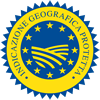Description
The Volailles du Val de Sèvres PGI include freerange, farmyard winged animals coming from slow-raising, rustic breeds.
Production Area
The production area of Volailles du Val de Sèvres PGI covers the entire department of Deux-Sèvres, in the Poitou-Charentes region.
Production Method
The poultry receives a diet very rich of cereals. The animals are raised in the open air. The poultry is butchered when achieves an age close to sexual maturity, which is different for every breed.
Appearance and Flavour
Volailles du Val de Sèvres PGI have tender but compact flesh, without excess of fat.
History
The reputation of Volailles du Val de Sèvres PGI is historic and numerous archive documents describe the existence of many poultry farms in the region. These products were sold in the frequent markets for farmyard animals of the region.
Gastronomy
The Volailles du Val de Sèvres PGI can be conserved in the refrigerator for a few days, in their original package. The fowl of these winged animals can be prepared in different ways depending on the cut chosen and is used to cook a lot of dishes, from the simplest to the most elaborated like terrines and pâtés. They are used to prepare important second courses roasted in oven, boiled or fried with sesame seeds. They can be seasoned in different ways, with aromatic herbs and butter, but also with spices, wine, white and tomato sauces. They are served with boiled vegetables, mashed potatoes or roasted potatoes.
Marketing
The Volailles du Val de Sèvres PGI include different types of products, depending on the specific varieties of poultry of the denomination which are individually written on the package. Amongst these, there are poulet fermier (blanc, jaune, noir), dinde fermière de Noël, pintade fermière, chapon blanc fermier, poularde fermière (blanche, jaune) dinde fermière, pintade fermière, chapon de pintade fermier (white, yellow and black, farm chicken; Christmas farm turkey; farm guinea hen; farm white capon, white and yellow farm pullet; farm turkey; farm guinea-hen capon). It is marketed fresh or frozen, whole with or without head or in slices packed in trays with protected atmosphere which guarantee a longer conservation and keep its organoleptic features.
Distinctive Features
The characteristic taste of Volailles du Val de Sèvres PGI is due to climatic and environmental features. The mild, oceanic climate of Val de Sèvres has favoured the development of a cultivation rich of cereals which are at the basis of the diet of the farmyard winged animals raised in this area.






